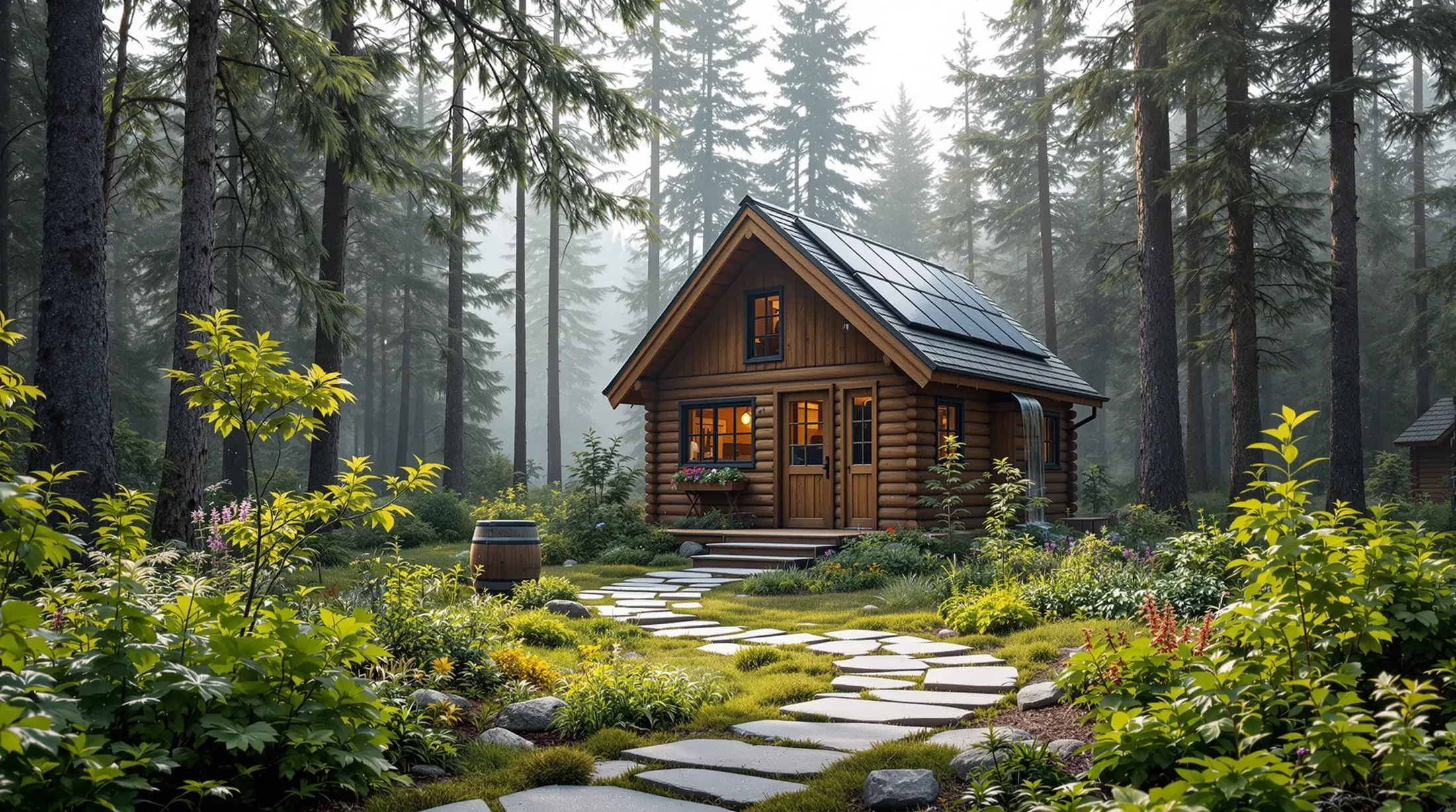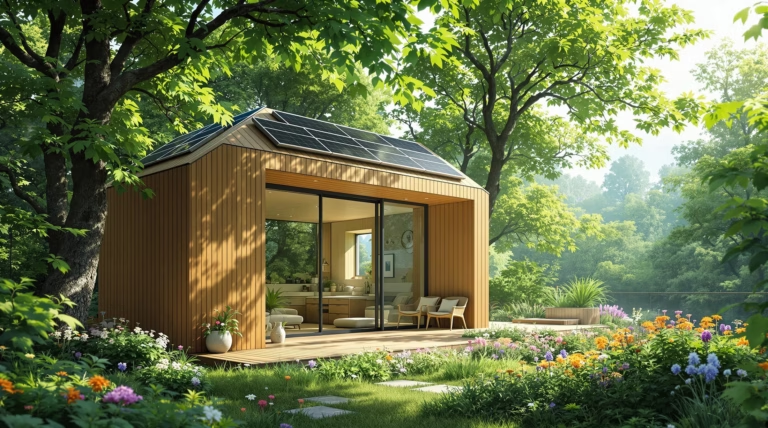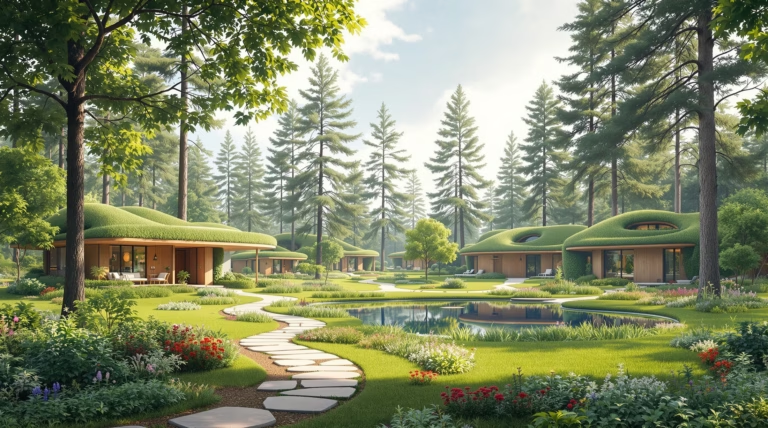Off Grid Cabin Plans: Design Your Dream Sustainable Retreat
Ready to break free from conventional living and create your own self-sustainable paradise? Off-grid cabin plans offer the perfect blueprint for building an environmentally conscious retreat that aligns with your values while reducing your carbon footprint. Let’s explore how to design your dream sustainable cabin that operates independently from public utilities.
Understanding Off Grid Cabin Plans
Off grid cabin plans are comprehensive blueprints designed to create self-sufficient living spaces that operate independently from public utilities. These specialized designs integrate systems for power generation, water collection, waste management, and climate control—all working in harmony with the natural environment. Unlike conventional home plans, off grid cabin designs prioritize sustainability, energy efficiency, and minimal environmental impact.
When creating your sustainable retreat, several crucial factors must be considered:
- Terrain characteristics and topography
- Optimal building orientation
- Local climate conditions
- Material availability
- Legal requirements
- Personal preferences and lifestyle needs
What Are Off Grid Cabin Plans?
Off grid cabin plans are specialized architectural designs that enable homeowners to live completely independent of municipal utilities and services. These plans incorporate detailed specifications for alternative energy systems, water collection and filtration, waste management solutions, and efficient use of space—all tailored to function without connecting to the power grid, water mains, or sewage systems.
| Cabin Size | Features |
|---|---|
| Minimalist (200 sq ft) | Basic amenities, compact design, essential systems |
| Family Home (1,500+ sq ft) | Advanced systems, spacious layout, comprehensive amenities |
Benefits of Designing a Sustainable Retreat
- Financial advantages – elimination of monthly utility bills and potential tax incentives
- Environmental impact reduction through renewable energy use
- Enhanced self-reliance and independence
- Deeper connection with nature
- Development of valuable resource management skills
- Greater peace and tranquility away from urban infrastructure
Key Elements of Eco-Friendly Cabin Design
Creating an eco-friendly cabin requires thoughtful integration of design elements that work harmoniously with the natural environment. A truly sustainable off-grid cabin balances aesthetic appeal with practical functionality while minimizing environmental impact. This holistic approach considers the cabin’s relationship with its surroundings, accounting for the land’s topography, seasonal sun patterns, prevailing winds, and local ecosystem characteristics.
Choosing the Right Construction Materials
The selection of construction materials significantly impacts both environmental sustainability and long-term durability. Consider these sustainable options:
- Sustainably harvested timber – excellent insulation and natural beauty
- Recycled metal roofing – durability and resource conservation
- Rammed earth and cob construction – superior thermal mass properties
- Structural insulated panels (SIPs) – exceptional energy efficiency
- Reclaimed architectural elements – character and resource preservation
When evaluating materials, assess their full lifecycle impact, including extraction methods, manufacturing processes, transportation requirements, maintenance needs, and end-of-life recyclability. The most sustainable designs incorporate materials with low embodied energy that will perform efficiently for decades with minimal maintenance.
Incorporating Renewable Energy Sources
Renewable energy systems serve as the foundation of successful off-grid cabin living, delivering the independence and sustainability essential for this lifestyle. Solar photovoltaic panels stand out as the most versatile and accessible option, with modern systems delivering impressive efficiency even in suboptimal conditions. When planning your cabin’s energy infrastructure, it’s crucial to calculate anticipated power needs, factoring in seasonal variations and incorporating adequate battery storage capacity.
- Position cabin to maximize southern exposure (northern hemisphere)
- Install battery banks for energy storage
- Consider supplementary wind turbines for consistent air movement
- Integrate passive solar design principles
- Utilize thermal mass elements for heat retention
Beyond electricity generation, thermal mass elements like stone floors or concrete walls can capture and slowly release heat, while properly sized overhangs protect from summer sun while allowing winter warmth. For cooking and water heating, efficient wood cookstoves with water jackets, solar thermal collectors, or biogas systems offer solutions based on regional resources. The most resilient off-grid cabins employ multiple complementary energy sources, ensuring comfort regardless of weather conditions.
Implementing Water Conservation Systems
Water management stands as a critical component of off-grid living, demanding careful planning and robust conservation systems. A self-sufficient cabin requires reliable clean water sources independent of municipal supplies. Effective water conservation strategies ensure basic needs while minimizing environmental impact and increasing resilience against drought or seasonal fluctuations.
- Collection and storage systems
- Filtration and purification methods
- Distribution networks
- Responsible disposal solutions
- Conservation techniques
Rainwater Harvesting Techniques
| Component | Specification |
|---|---|
| Roof Material | Metal roofing (ideal for clean runoff) |
| Collection System | Gutters and downspouts |
| Storage Options | Rain barrels or underground cisterns |
| Daily Usage | 10-30 gallons per person |
Greywater Recycling Options
Greywater recycling extends water resources by repurposing gently used water from sinks, showers, and washing machines, potentially reclaiming up to 60% of cabin water for secondary uses. A split plumbing system separates greywater from blackwater, enabling easier treatment and repurposing.
- Simple shower water filtration systems
- Settling tanks for primary treatment
- Biological filtration through constructed wetlands
- Commercial greywater treatment systems
- Subsurface irrigation distribution
Off Grid Heating and Cooling Solutions
Creating a comfortable living environment in an off-grid cabin requires thoughtful heating and cooling solutions independent of conventional utilities. The ideal climate control strategy balances effectiveness with minimal resource consumption, combining passive design elements with active systems powered by renewable energy. This hybrid approach ensures reliable comfort throughout seasonal changes while maintaining energy independence.
Efficient Heating Systems for Cabins
Wood-burning stoves and fireplaces serve as the foundation of off-grid heating systems, combining simplicity with renewable fuel sources. Modern high-efficiency wood stoves achieve up to 80% efficiency while maintaining minimal emissions. Rocket mass heaters represent an advanced evolution, utilizing insulated combustion chambers for optimal fuel burning and heat storage in thermal mass elements.
- High-efficiency wood stoves with secondary combustion chambers
- Rocket mass heaters with thermal storage capabilities
- Direct-vent propane heaters requiring no electricity
- Radiant floor heating for solar-powered cabins
- Passive solar heating with thermal mass flooring
| Heating System | Key Benefits |
|---|---|
| Wood Stoves | Renewable fuel, high efficiency, independence |
| Rocket Mass Heaters | Extended heat radiation, complete combustion |
| Propane Systems | No electricity needed, reliable backup |
| Radiant Floor | Even heat distribution, solar compatibility |
Natural Cooling Techniques
Effective off-grid cooling prioritizes smart design over energy-intensive systems. Strategic window placement creates natural cross-ventilation, while properly positioned clerestory windows facilitate the chimney effect for optimal air circulation.
- Cross-ventilation through opposite wall window placement
- Clerestory windows for enhanced air circulation
- Thermal mass integration for heat absorption
- Night purging techniques for temperature regulation
- Exterior shading through roof overhangs and natural vegetation
- DC-powered ceiling fans for energy-efficient comfort
For regions with varying climate conditions, combining thermal mass with night purging effectively manages indoor temperatures. In low-humidity areas, evaporative cooling provides efficient temperature reduction, while humid regions benefit more from dehumidification strategies. DC-powered ceiling fans offer an energy-efficient solution, creating a cooling effect that can make spaces feel up to 8°F cooler without actual temperature changes.



